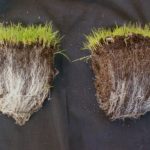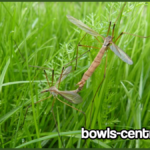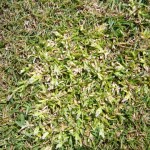
Localised Dry Patch is a common problem on greens in summer and it can take a while to conquer it. Could some of our traditional management practices be making it worse?
The Bowling Green Opening Day preparations are vital to the playability of the green in the early weeks of the season, but don't try to force things along too much. John Quinn details some of the most important considerations for this critical period in bowls green maintenance

Mycorrhizal fungi and turf health go hand in hand. The symbiotic relationships that exist between our turf grass plants and soil fungi are critical to producing a high performance, perennial grass dominated sward. Here we look at the benefits of mycorrhizal relationships in turf and the techniques greenkeepers can employ to encourage them.

Grasses employ a range of physical, chemical, and indirect defences to protect their roots from insect herbivores. Further research is needed to fully understand these mechanisms and to explore other potential defences, but meantime, we can take some of this knowledge and apply it now to our greenkeeping practices.
If your green maintenance budget was cut in half this year what would you do?
Most clubs when faced with cuts to the greenkeeping budget, will try at all costs to keep the most important work in the plan. Unfortunately, important frequently gets confused with dramatic, which means that the big expense of top-dressing in the spring and autumn usually stays in the plan and I wish it didn’t for all the reasons I’ve explained over many articles.
Meantime, the work deemed less important and which of course is less dramatic is often sidelined or dropped as a result of a fear of what might go wrong if the big, sexy stuff is missed. These big jobs “must be doing a lot of good”, or so the thinking goes, because they’re so expensive and disruptive?

Yes, I'm thinking about Autumn already. Why?, It's all to do with the devastating effect of Localised Dry Patch on many greens this year. I've ever had so many people get in touch. It looks like the more regular occurrence of extreme heat and long dry spells is demonstrating the problem of excessively sandy rootzones, much better than I could ever hope to explain...

Sand Top Dressing - that ubiquitous and apparently simple greenkeeping operation indulged in by most clubs annually is actually a much more complex operation than most give it credit for. In this article John Quinn explains the mechanics of top-dressing. He explains what it can and can't do and why you must understand some soil science before top-dressing is considered.

Transitioning your green from Poa annua to bent/fescue is not only critical to achieving a Performance Bowling Green, but is actually a realistic goal. The spongy, soft turf associated with annual meadow grass is less than ideal for bowls. Common wisdom says that this can't be done without major disruption and that even after it is achieved it wont last. This article explains in detail how to undertake the transition of your green from Poa annua to bent/fescue turf and dispels the myths about stressing Poa. This is the way to change your green permanently and without fuss. It will also save your club money on maintenance, so what's not to like?

Understanding your greens soil analysis report isn't always at the forefront of thought of those who instigate the soil test. Too often it is merely a fertiliser sales tool with the advice given taking very little notice of the results received.
Greens soil analysis results are often confusing and use terms that are not easily understood in relation to greenkeeping practice. In this article, John sets out to change that by taking apart a typical greens soil analysis report and explaining it in terms we can all understand. More importantly it relates the results to maintenance.

On grass areas where there is little or no human interference in the form of excessive fertiliser and pesticides, such as in meadows or parks, the thatch layer will almost always be at the optimum level for a continued healthy turf/soil eco-system. This is due to the soil/plant relationship being in balance; a strong and sufficiently lively soil microbe population releases nutrition from the thatch layer as it decomposes naturally.